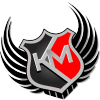Leaderboard
-
in all areas
- All areas
- Events
- Event Comments
- Event Reviews
- Blog Entries
- Blog Comments
- Images
- Image Comments
- Image Reviews
- Albums
- Album Comments
- Album Reviews
- Garage Vehicles
- Garage Vehicle Comments
- Vehicles
- Product Reviews
- Products
- Topics
- Posts
- Articles
- Article Comments
- Article Reviews
- Status Updates
- Status Replies
-
Custom Date
-
All time
December 17 2014 - October 6 2024
-
Year
October 6 2023 - October 6 2024
-
Month
September 6 2024 - October 6 2024
-
Week
September 29 2024 - October 6 2024
-
Today
October 6 2024
-
Custom Date
03/18/2015 - 03/18/2015
-
All time
Popular Content
Showing content with the highest reputation on 03/18/2015 in all areas
-
That's a great testimony there! I like to see when riders speak up and recognize the good work out there whether it's from people who work on our machines or make the stuff for our machines. It's sadly too common that you hear nothing but complaints from so many whose expectations are sky high and patience razor thin. I want XLADV to be a community where people like Alex are welcomed and in return, they get the proper respect and recognition that's due. I have heard many good things about Alex and was lucky to get to ride with him in Death Valley in December. I will have to do a similar entry for a mechanic here in my area, Lior Elbaz of Liorsmotoride.3 points
-
In the Pacific Northwest, we have access to some incredibly talented motorcycle craftsmen, whether it’s Darryl VanNieuwenhuise’s Cyclops Adventure lights, Alex Marten’s Konflict Suspension or Alex Guth of Alyxmoto. OK, you might ask, who is Alex Guth? Well, Alex is a master motorcycle mechanic who moved here from Germany in the late 90s. He has 25 years of experience working on BMW motorcycles, and for a time was the shop manager of SSBMW. But now he’s in his own shop, and he’s expanding into more of the adventure market like KTM and our Yamaha Super Tenere. I know one BMW GS owner in particular who travels all the way from Alberta Canada just to get his bike worked on by Alex. Alyxmoto is where world travelers like Simon and Lisa Thomas of www.2ridetheworld.com stop to get their bikes worked on. Alex rebuilt Lisa’s older F-650GS from the ground up (after 200+K miles on a single cylinder; it needed it), and when Simon’s 1150GS’s final drive exploded (after 150K miles) on a Seattle freeway at 60MPH, Alex had him back on the road in minimal time, so the couple could get to a presentation in Boise Idaho. Helge Pedersen’s www.globeriders.com tour members’ bikes get tuned up here before getting packed in the container to head out on their globetrotting journeys. The roomy new shop has multiple lifts and tire changing capabilities. The shop was just finished last weekend, so Alex is still moving in and getting everything settled. He can do just about anything, not that our Yamahas need much done to them other than regular servicing I had Alex do a simple tune up of new spark plugs, air filter, wheel bearings, rear brake disk and new tires (Mitas MC-60’s). I only do my own oil changes, because that’s about the limit of my mechanical patience, and a limitation of not having an actual garage at my house. Alex is still working on getting a steady supply of Yamaha parts, so I showed up with all the parts and had him install them. It’s great to have Alex available in the area. I know several of our members have spouses that ride BMWs (mine included: Elsa gets her G-650GS low serviced by Alex), and Alyxmoto can be everyone’s one-stop shop. Alex is the right guy with the know-how to get you set up for a long journey or just your daily commute, so give him a call if you need anything done. He really knows his stuff! Web: www.alyxmoto.com Shop Location: 17829 77th St E, Bonney Lake WA 98391 Phone: 503-270-70882 points
-
I was going to start the thread with a I've been doing a lot of LDR lately (Long Distance Riding, duh!) and I need more gas crap, but to be honest, I love how the extra fuel canister looks on my bike. The problem I had is that I didn't want to the rotopax to be on the sides or the back but on top of the side aluminum cases. Right under my Wolfman rollie bags. But there was no way to strap them properly so I had to improvise. Total cost of project: $15 Total man hours spent: 1 Total beers consumed: 3 Industrial Revolution Vanilla Porter (I love living in CO) Enjoy! Your standard ADV side case Your standard BMW straps Using the Wolfman rollie alone with the straps: perfect! Using the Wolfman rollie and the rotopax with the straps: disaster! The rotopax will just fly away with the slightest bump. The solution: Footman Loops for next to nothing (here) I also needed some STAINLESS STEEL hardware as well as some pieces of an old bicycle tube Marking the “G” spot Measurements because OCD Am I actually drilling a hole on my sidecar? I wonder if this will void the warranty… The tube will help the water to stay out (in theory) Screw -> hook -> washer -> tube in this order Thank the OCD for measuring… How did I make it crooked? Screw tight (boom, phrasing!) Cut the edges. Final product And here’s the magic! Yes, these are the original straps that came with my bike… This rotopax, won’t go anywhere! Not bad, right? http://i.imgur.com/9yhErV9.jpg Best think, I can still open my side cases with everything on them! Now I’m ready to go to my local Starbucks. Oh wait, I’ve got extra fuel! I can go to the one across town!! WOOHOO!!!! This post has been promoted to an article1 point
-
Welcome and thanks for stopping by! Our Sr. Editor Eric Hall was at the T of D I'm guessing that you met? We'd love it if you'd share your ride report, for those not lucky enough to be able too attend. I hear that it was a great ride!1 point
-
Hello Hawk42, I am also from Yuma AZ. Found this site from attending the Taste of Dakar ride.1 point
-
Was a damn great trip, can't wait for the next ride! Getting the bike ready, fresh tires oil and replace a bad wheel bearing. packing the luggage and ready for the trip! Riding up over ACH and into Palmdale, at least CALTRANs is actually working up here Stopped for a stretch along the long ride out Lots of long open ride Arrogosa Sunset on the way into Pahrump1 point
-
SUSPENSION TROUBLESHOOTING This information contains a list of concerns, and solutions to the most common problems riders have with their suspension. Damping Extreme's 1. Too much rebound damping (also known as packing) The suspension is held down in the stroke because it cannot rebound fast enough and each bump created additional compression. The ride becomes harsh due to too much force being needed to initiate movement. This also creates a loss of traction due to tire deflection. 2. Too little rebound damping (Pogo) When there is too little rebound, there is not enough control of the spring energy. This causes a pogo like action. This can cause vertical movement that can lift the wheel off the ground, and cause a loss of traction. 3. Too much compression damping (harshness) When you have too much compression damping, this will cause the front wheel to deflect off the rock, log, stump, root, or rut on impact because there is too much resistance to movement. This will equal are harsh ride. 4. Too little compression damping (bottoming) The wheel moved past the crest of the crest of the whoop, rut, log, rut during compression and is not able to follow the backside of the bump causing a loss of traction. This will feel mushy an can bottom easily. There are a number of conditions that contribute to your everyday suspension action. There are so many variables that go into suspension set-up that are completely unnoticed. Something as simple as changing the brand, and type of tire can affect your suspension positively or negatively. The section below will go into troubleshooting your suspension action. Forks Bottoming 1. Oil level is too low. 2. Not enough low speed compression damping 3. Not enough high speed compression damping 4. Spring rates are too soft 5. Not enough pre-load 6. Valving shims are distorted. Too stiff-Deflects, Harsh, Nervous, Twitchy 1. Too much compression damping adjustment, high speed, and or low speed 2. Too much compression damping internally 3. Spring rates are too stiff 4. Too much low speed rebound damping= packing 5. Oil level is too high 6. Stiction Poor traction 1. Poor tire/compound 2. Too much tire pressure 3. Tire pressure too low 4. Too much low speed rebound damping 5. Too much low speed compression damping 6. Too little low speed rebound damping 7. Not enough low speed compression damping Not enough weight of the front end: 1. Axle placement is too short 2. Swing-arm is too short 3. Sitting too far back 4. Bars to high, or sweep too much Doesn't turn This happens to be the most misunderstood and misdiagnosed fork symptom. It typical is more of a geometry issue, than a suspension issue, though these do overlap. Do the bars turn easily, or is hard to turn the bars? If it is easy to turn start with section 3 (poor traction) then 5 (pushes) If it is hard to turn (requires excessive force) go to section 6. A. Tire profile is too flat or wide B. Riding position- not enough weight on the front end 1. Seat too low 2. Bars too high C. Riding style (not everything is the bike) 1. Riding style 2. Rider doesn't understand the concept of counter steering 3. Not weighting the front end 4. Elbow down riding style 5. Sitting too far back 6. Rider centerline to outside of bike centerline 7. Not looking through turns Pushes (Easy to turn the bars, but the bike doesn't turn, low traction) 1. Front end rides too low in comparison to the rear (check sag) 2. Raise the forks (slide forks down in triple clamps 3. Lower the rear end 4. Fork springs too soft 5. Not enough fork pre-load 6. Low speed rebound too high, causing packing 7. Not enough low speed compression damping 8. Increase low speed compression damping 9. Anything that makes the rear higher than the front (Sag) Takes excessive force to turn the bars (Plenty of traction, doesn't complete the turn. This is more of a geometry issue that suspension action.) 1. Front end is riding too high 2. Lower the front end 3. Too much spring pre-load 4. Spring rates too stiff 5. Rear ride height too low (Sag) 6. Forks have too much air (bleed forks) 7. Lower the rear end (Sag) 8. Too much low speed compression damping 9. Too narrow of a bar 10. Sticky forks (Stiction) Dives under braking 1. Modern forks should, linkage (BMW) front ends may even rise 2. When braking the dive is controlled by spring forces only (rate, pre-load, and air gap) valving has nothing to do with this. 3. Fork angle is too flat, choppered out, too much rake 4. Fork springs too soft Feels loose 1. Not enough low speed rebound damping 2. Not enough high speed rebound damping only on big bumps 3. Not enough compression damping 4. Spring rate too soft 5. Steering bearings loose or worn out 6. Swing arm bearings, or linkage bearings worn out 7. Tire pressure to low or high 8. Fork flex, chassis flex, swing arm flex 9. Suspension needs servicing (oil broken down, bushings worn) 10. Worn out rebound piston bushing (rare) Sticky forks 1. Misaligned forks 2. Triple clamps bent 3. Bent fork tube 4. Bent axle 5. Bushings worn 6. Poor bushing design 7. Upper tube anodizing worn 8. Air pump (seals worn) 9. Poor quality seals 10. Poor oil quality 11. Triple clamps too tight 12. Misaligned fork tube height 13. Forks not broken in (twin chamber) 14. Metal imbedded in bushings (Pre-load washers not located properly, aluminum washers, steel springs directly on aluminum caps, fork caps improperly installed) Headshake (Fast side to side movement of the bars) 1. Chassis not straight- twisted or offset 2. Misalignment of wheels, axle marks off 3. Fork flex, chassis flex, swing arm flex 4. Not enough trail-not enough self centering effect 5. Worn out or loose steering bearings, binding, dragging 6. Too much trail- returns past center than re-corrects the other way quickly 7. Oil level too high 8. Not enough low speed rebound damping 9. Too much high speed compression damping-deflects on bumps 10. Tire pressure too high or too low 11. Poor tires 12. Tire not properly mounted 13. Wheel out of balance-bent rim 14. Brake rotor is bent 15. Sticky forks Chatters (This can be a vibration/harmonic problem when the input frequency matched the natural frequency of the suspended system, This is often confused with and can cause headshake) 1. Not enough pre-load damping 2. Not enough compression damping 3. Spring rates to stiff 4. Too much compression damping 5. Too much rebound damping 6. Too much or too little tire pressure 7. Poor tire design 8. Chassis flex 9. Sticky forks Bounces off the ground on jump landings 1. Bottoms heavily (see #1) 2. Not enough high seed rebound damping 3. Not enough low speed rebound damping Deflection 1. Too much high speed compression damping 2. Spring rates too stiff 3. Too much pre-load 4. Too much low speed compression damping 5. Too much low speed rebound damping 6. Sticky forks Leaky seals 1. Old seals 2. Nicks in tubes 3. Worn bushings 4. Bent tubes 5. Improper installation 6. Fork tube too smooth (Extremely rare Solva suspension) Shocks Kicks This is commonly misdiagnosed. This symptom is usually diagnosed as not enough rebound damping however, it is usually caused by one of two things, It's too stiff, or way too soft. 1. Too much high speed compression damping 2. Spring rates too stiff 3. Way too much low speed compression damping 4. Too much rebound damping 5. Linkage bearings bad 6. Too high of tire pressure 7. Way too much pre0load 8. Sticky shock Bottoms 1. Not enough low speed compression damping 2. Not enough high speed compression damping 3. Spring rate too soft 4. Too much static sag 5. Suspension fluid worn, or poor quality 6. Not enough nitrogen pressure 7. Blow bladder 8. Distorted valving shims Swaps 1. Too much high speed compression damping, deflecting, not bottoming 2. Not enough low speed rebound damping-loose 3. Not enough high speed rebound damping 4. Spring rate too stiff 5. Spring rate too soft 6. Sticky shock Feels loose/shock pump 1. Not enough low speed rebound damping 2. Not enough high speed rebound damping 3. Not enough low speed compression damping 4. Spring rate too soft 5. Too little pre-load Poor Traction 1. Too much low speed rebound damping 2. Too much low speed compression damping 3. Not enough low speed rebound damping 4. Too much tire pressure 5. Tire worn 6. Shock heim bearing worn 7. Linkage bearings worn 8. Spring rate too stiff 9. Too much pre-load 10. Sticky shock Not tracking 1. Too much low speed rebound damping 2. Too much high speed compression damping 3. Too much low speed compression damping 4. Sticky forks, or sticky shock Sticky Shock 1. Linkage not maintained 2. Swing arm bearings worn 3. Shock eyelet bearing not lubed 4. Bent shock shaft 5. Worn/ poor quality seals, fluid, bushings Suspension Set-Up Front Forks and Wheel Installation Installing the front wheel incorrectly can cause the forks to bind, this will create a harsh stiff feeling as the forks go through the stroke. Most lower triple clamp lower bolts should be torqued to 12 to 15 ft. lbs., with the uppers being torqued 17 to 18 ft. lbs. Consult your service manual for the correct torque setting. Installing the front wheel correctly will ensure you do not bind the front forks. 1. Install front wheel. 2. Slide axle through forks, and tighten the nut (O.E.M torque spec) leaving the axle pinch bolts loose. 3. Remove the bike from the stand, lock the front brake and compress the suspension 4 times to center the axle in the fork lugs. 4. Tighten the axle pinch bolts to manufactures torque specification. Shock Installation When installing the shock onto the bike, always torque the bolts to manufactures torque specification. We always install the shock, take the bike off of the stand a put it under a load, then torque them to specification. This will insure there is not any binding in the linkage, or on KTM's in the heim joints. Tire Pressure A high amount of tire pressure can cause harshness and deflection which will create a feeling of unbalance on tough rocky, root infested trails. Depending on the weight of the rider, we typically suggest for 2 strokes 10 to 12+PSI, and for four strokes 10 to 14+ PSI. Of course this is dependent on where and what type of terrain you are riding This post has been promoted to an article1 point







